Clipart tagged: ‘Carboniferous’

Archaean Time
This is a diagram showing the rocks of the successive periods of time. They are shown in order from…

Fossil Coral
Favosites alcyonaria is a species of fossil corals from the Silurian, Devonian, and Carboniferous strata.
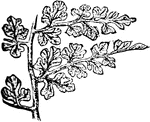
Seed Fern
A species of Seed Fern (Sphenopteris obtusiloba) is a fossil fern in the Carboniferous Era.

Seed Fern
A species of Seed Fern (Sphenopteris latifolia) is a fossil fern in the Carboniferous period.
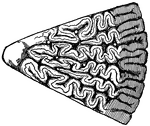
Section of Tooth of Typical Labyrinthodont
This illustration shows a section of a tooth of a typical Labyrinthodont. Labyrinthodont, or Stegocephali…
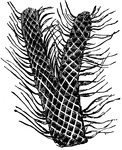
Portion of Lepidodendron
This illustration shows a portion of Lepidodendron. Lepidodendron is the generic name of a large and…
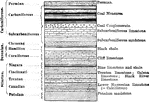
Paleozoic Rocks
A section of the Paleozoic rocks found in the Mississppi basin illustrating the periods and ages.
Rock Layers Showing Geological Periods
"Diagrammatic structure section of the Wasatch Range in Ogden Canyon." -Lee, 1915
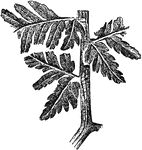
Sea Fern Fossil
An illustration of a sea fern fossil from the carboniferous period. The Carboniferous is a geologic…
